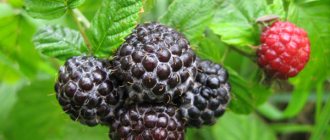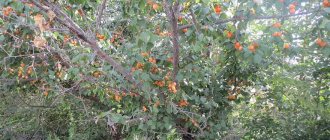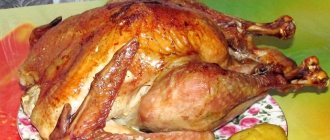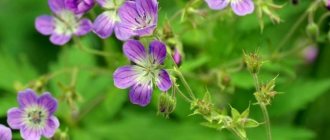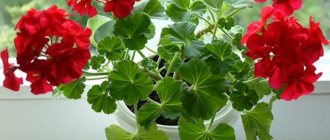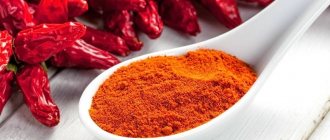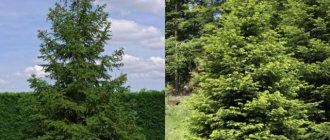- February 26, 2019
- Flowers
- Khramenkova Elena
Since ancient times, in many houses there have been pots with a beautiful flower - geranium - on the windowsills. Everyone knows that it is not difficult to grow, but at the same time it blooms charmingly. The plant is so popular among gardeners that there are very few apartments where it is not found.
Very few people know the scientific name of geranium and that this name refers to another plant.
History of geranium and pelargonium
We often think that geranium and pelargonium are the same plant. As it turned out, for all their external similarity, these are two completely different flowers. They are both classified as members of the Geranium family.
The scientific name of geranium is geranium, from the Greek geranios, which translates as “crane”. Geranium got its name because after fertilization the pistil stretches out and begins to resemble a crane's beak. Therefore, the British call geranium cranesbill - “crane bird”.
The problem is that it is not a geranium at all. A real flower with this name grows on the street and is a decoration for someone’s gardens and front gardens.
The pelargonium flower is scientifically called pelargonium from the Greek. pelargos and means "stork". Pelargonium enjoyed great love and popularity among flower growers and gardeners. But for some reason they called it geranium. The creator of the first classification of plants, Carl Linnaeus, asked the question: is pelargonium a geranium or not? And in the process of research I made a discovery. He combined them into one group - the geranium family - and showed how geranium differs from pelargonium. He found out that these flowers cannot be crossed with each other. K. Linnaeus classified them into one family because of the similarity of the fruit capsule.
Geranium - what is it, description
Geranium is a genus of one-, often perennial, ornamental plants of a large family, numbering more than 400 species. The name geranium comes from the Greek geranos - “crane”, which is why it is popularly called the crane tree. The beauty can be found not only in gardens, but also in the vast wilderness.
- The plant is suitable for growing in temperate zones, is frost-resistant and overwinters well in open ground.
- The height of geranium is 20-60 cm.
- Geranium leaves are on long stalks, with a palmate, less often pinnately divided shape.
- The flowers are regular and bisexual. From the five-leaved calyx, 5 evenly spaced, almost rounded petals open.
- Geranium can be propagated by dividing rhizomes or by seeds.
Having examined each plant separately, we can draw a line and easily determine what their differences are.
Appearance of geranium
Geranium is a beautiful and fragrant shrub. Perennial with carved leaves and a scattering of multi-colored flowers. The latter consist of 5–8 petals, arranged symmetrically. Very common varieties of pink, white, lilac and crimson shades. Sometimes you can find a black flower. But there is no scarlet geranium, which is why it differs from pelargonium. The shrub has a strong branched root system. Geranium is undemanding to soil. There are certain varieties of this plant for the garden that are absolutely undemanding when pruning in the fall.
Geranium growing in a meadow, with its beautiful blue flowers, and pelargonium in pots on a windowsill, pleasing with its lush red color, are related to each other.
Differences between colors
Despite some similarities, there are quite a few differences between the plants:
- resistance to cold;
- flower shape;
- features of care;
- use in horticulture;
- appearance.
Worth knowing! Proof that pelargonium and geranium are still completely different plants is offered by nature itself - it is absolutely impossible to cross them with each other.
Appearance
If you look closely at the flowers, the differences will be noticeable to the naked eye:
- Geranium flowers consist of 5 or 8 petals and have a symmetrical shape, located mostly singly, less often in inflorescences. In pelargonium, symmetry is observed along one axis - the upper petals are larger and the lower petals are smaller.
- Geranium looks like a wildflower and looks simple, while pelargonium has a luxurious, royal appearance and pleases the eye with lush flowering.
- Geranium flowers are found in various shades, except scarlet. Pelargonium is never blue.
- Geranium can often be found growing in open ground, while pelargonium is planted mainly in pots.
Geranium branches consist of 5 or 8 petals, single or sometimes collected in inflorescences.
Care
Caring for geranium and pelargonium is also required differently.
Features of caring for geraniums include:
- There is no need to dig up or insulate the flower for the winter, as it is resistant to cold. You only need to remove the wilted greenery of the plant once a year.
- The soil must be highly permeable; plants can be planted in small groups. Geranium is a ground cover plant and quickly spreads across the land allocated for it, covering large areas.
- Additional feeding of flowers is not required;
- Planting in shady areas, partial shade, and even arid shade is possible;
- The root system is strong and branched, which allows the plant to receive the necessary nutrients and moisture from the depths of the soil;
- Garden varieties of geranium are perennial and regrow after wintering.
- By removing drying inflorescences, flowering can be prolonged.
- Geraniums should be replanted periodically to extend their life.
- It propagates vegetatively and by seeds, but takes root best when its seedlings are planted.
Caring for pelargonium will be completely different from that of geranium, since it is mainly grown as an indoor flower; in garden conditions, the plant grows for one season (annual):
To feed pelargonium, you can use not only ready-made formulations, but also products and medicines from your home medicine cabinet.
When grown in the garden, the plant must be dug up and transferred to boxes for winter storage, or thrown away. The flower must be stored in limited lighting and an ambient temperature of 5-7 degrees.
- A sufficient amount of daytime sunlight is necessary for flowering. This should be taken into account when placing the pot, and choose a place for it where the shade lasts less than half a day.
- The plant should be fed regularly (peat, clay, sand, special fertilizers).
- Watering should be moderate.
- Regular feeding is required.
- The air temperature in the room with the flower should not fall below 12.
- The root system is small, fibrous.
- With a lack of lighting, pelargonium flowering stops. Due to excessive watering, root rot is possible, which is externally manifested by changes in the leaves of the plant.
- The soil in the pot should be loosened monthly to provide oxygen to the roots.
- The flower pot should be spacious with a wide drainage layer, the soil should be loose, and neighboring flowerpots should be placed at a distance from the pelargonium. So as not to interfere with its wild flowering.
- In winter, you can stop watering, as the plant tolerates a lack of moisture well.
Worth knowing! Pelargonium is a delicate houseplant, and any violation of the rules for caring for it immediately affects its flowering (reduction in the size and number of flowers, up to complete cessation).
Application
Considering that geranium and pelargonium have different requirements for conditions of maintenance and care, their use is also significantly different.
Geranium is planted mainly in gardens, in different areas and in small groups, since when planted over a large area, it looks untidy due to dissected leaves and small flowers.
Geraniums are planted:
- as a ground cover perennial plant that is unpretentious in care;
- for background filling of voids in a flower bed;
- for covering difficult and shady areas of the garden;
- for landscaping slopes (thanks to strong and tenacious roots).
Pelargonium is much less common in the garden due to its tenderness and instability to frost; it is planted:
- in gardens as an annual plant;
- in pots as an indoor flower;
- for landscaping open balconies and terraces.
Appearance of pelargonium
If geranium is a perennial shrub, then pelargonium, in contrast, is a perennial herbaceous plant. Its leaves are palmate. This means that the leaf veins are arranged like rays. The flowers have an irregular shape. The upper petals are larger than the lower ones. Pelargonium blooms with a variety of colorful inflorescences, but this plant does not have a blue or purple color scheme. The root system is also different in that it is small and fibrous. It is demanding on the soil. She needs good fertile soil. The presence of drainage in the pot is mandatory. It is believed that the plant is unpretentious, but it is necessary to prune and shape it. The following types are suitable for growing indoors: royal, zonal and ivy-leaved.
Signs and beliefs
Geranium can have a positive effect on the surrounding area and people. For many, it is associated with old grandmothers and Soviet times, when the flower adorned every windowsill. Our grandmothers believed that the plant has truly unique properties. However, even now it does not lose its popularity.
The plant saves families from scandals and quarrels, creating a harmonious atmosphere in the house. A specific aroma helps to cope with a stressful situation and relieves excessive irritability. The nervous system comes into order under the influence of a miraculous plant, thanks to which a person no longer has bad dreams, and insomnia goes away. Many believe that it is an excellent amulet that protects against the evil eye and damage.
A variety of beliefs are associated with geranium, in which our ancestors especially strongly believed. Previously, girls carried dried flowers with them, sewn into a bag, so that the guy who liked them would pay attention to them. The girls believed that they helped the birth of reverent love. It is believed that the plant has a positive effect on the family budget.
Flowering geranium close-up
We suggest you read: How to propagate geraniums from cuttings at home
The proximity of geraniums to azaleas is especially beneficial - together they attract calm and tranquility into the house. Promote the development of creative abilities in children.
White geraniums symbolize purity, innocence and sincerity. They protect family happiness from misfortunes and failures. Married couples who want to have a child should immediately purchase white geranium: it will help them become parents.
Red symbolizes passionate love. Single girls who dream of meeting their soulmate should make friends with them. Red geranium will help preserve beauty and youth. Pink plants are presented to girls who cannot get married for a long time.
Growing geraniums and pelargoniums
Flower habitats are also chosen differently. Geraniums in the garden are planted in shade or partial shade. It tolerates frost well. It does not need to be covered for the winter. Due to the fact that it has strong roots, it can easily grow on slopes. Geranium looks good along garden paths or in tree trunks. Perfectly fills empty spaces in flower beds. Forms a good combination with rose. You can try to plant the bush as a tapeworm.
Pelargonium is a very heat-loving flower. And it has taken root well in an apartment or in a winter garden. In summer, you can decorate your balcony or terrace with its flowers, but drafts must be avoided. In winter, pelargonium should be kept at home. To avoid burning the leaves, do not allow them to be exposed to bright sunlight. Many people use it as a garden decoration. Geranium is a garden plant, and pelargonium is an indoor plant, and the naked eye can see how geranium differs from pelargonium.
Most geraniums have a special aroma. These are quite viable plants, undemanding in care, loving moderate sun. They reproduce easily and simply. It has been noticed that there are a large number of similarities between these beautifully flowering plants. This then begs the question: what is the difference between geranium and pelargonium? It fascinates even experienced flower growers.
Pelargonium is considered an excellent healer. It is an excellent air purifier as it has antibacterial properties. With its aroma, pelargonium can relieve headaches and improve sleep. Helps well with tension and cardiovascular diseases. Geranium differs in many ways from pelargonium, which means that care for them needs to be organized differently.
Features of cultivation
Due to the fact that both varieties belong to the same family and have similar biological traits, their care is largely identical. Flowers can be grown on loose fertile soils. In this case, the medium can be either neutral or acidic. Rocky varieties thrive on sandy soil, while meadow varieties require heavy clay soil.
This is interesting: Drainage for indoor flowers: what can be used from improvised means
Plants should grow in a well-lit place. However, direct rays of the sun are contraindicated for them. Partial shade is allowed. Peculiarities in care appear due to the fact that one type is considered garden, and the second - indoor. Let's take a closer look at what care is needed for each variety.
Pelargonium care
The flower is considered heat-loving. However, despite this, caring for it is not that difficult.
Here you must adhere to the following rules:
- watering should be carried out regularly;
- high-quality lighting is necessary;
- periodically the bush should be formed by cutting off excess stems;
- The room temperature should not fall below +12 °C.
An excellent place for growing pelargonium in an apartment would be a window sill located on the southeast and southwest sides. The plant needs a little coolness, but it must be protected from drafts. If a flower lacks light, then inflorescences are not formed or very small buds are formed. If the leaves come into direct contact with sunlight, a burn may develop.
Watering is done when the top layer of soil dries, otherwise the roots may begin to rot. If the root system experiences discomfort, the leaves become lifeless and lethargic. There must be drainage at the bottom of the pot, which removes excess moisture from the container. Periodically, it is necessary to loosen the soil in the pot so that the roots have access to oxygen. Before flowering, the home beauty should be fed.
Geranium care
Geranium is less demanding to care for, so it is highly valued among gardeners. A place for a flower garden should be chosen that is well lit, but not in the path of cold winds. The plant needs periodic fertilization, as well as the removal of weeds from the flowerbed. During the season, watering the bushes is carried out in case of prolonged drought. Since this variety does not tolerate stagnation of water in the soil, it is necessary to organize good drainage in the flowerbed before planting it.
In autumn, you don’t have to move the flower into the house, but leave it to spend the winter in the flower garden.
But for this, the plant must be properly prepared. It is necessary to cut off the shoots so that when snow falls, a high snowdrift can form. Many varieties of geranium can overwinter in this form. As you can see, pelargonium and geranium, although they are representatives of the same family, are still completely different species. This must be remembered, since caring for both varieties has its own nuances.
Geranium care
Geranium is an unpretentious flower, and if a gardener does not have the opportunity to devote a lot of time to flowering plants, then this is what is needed. You can completely safely skip scheduled pruning or fertilizing or not cover it for the winter - the plant will not be offended. It will still bloom and smell.
Planting is best done in early spring or autumn. The hole for placing geraniums should be larger than the length of the seedling. You need to deepen the root to 5 cm. Afterwards, be sure to use mulch and ensure regular watering. If you are planting several bushes, you need to take into account that the plants grow and you need to leave a distance of 30 cm between them.
Watering should be moderate and regular. It is advisable to avoid drought. This will have a bad effect on flowering, and the leaves may dry out. Excessive watering can also affect flowering. It may stop completely.
Geraniums in the garden are beneficial because they attract pollinators and repel harmful insects.
Taking this into account, it can be planted directly on the beds. After the flowering period has ended, the flower stalks need to be removed. And in the fall, cut off the wilted above-ground part.
Geranium has a sufficient range of varieties that are planted in the garden. There are red, brown and ashy geraniums. Propagating them by seeds is quite labor-intensive, so it is better to do it by seedlings or by dividing the bush.
Useful properties of geranium
It not only decorates the apartment, but also has many useful properties. It contains flavonoids, essential oils, tannins, carotene, starch, fructose, pectin, manganese, iron and other substances. People have been interested in the properties of the miracle geranium since ancient times; it attracted the attention of healers, sorcerers and priests. With its help they fought evil and protected pregnant women.
It was used to eliminate headaches, stress and pain in the spine. It is able to fight bacteria and viruses, stop bleeding, relieve pain and swelling, heal wounds, and have a positive effect on the gastrointestinal tract and heart.
When you have a runny nose, drop juice from the leaves into your nose; when you have a cough, drink an infusion from the leaves and gargle. Ear diseases are treated by placing a fresh leaf in the ear canal. There are a large number of recipes for its use for medicinal purposes.
Pelargonium care
Caring for pelargonium is not difficult. It is necessary to follow simple rules so that it can bloom all year round:
- Pelargonium loves a lot of light. If there is not enough of it, it will stop growing and the flowers will decrease in size.
- Provide regular watering. It should be done at the moment when the top layer of soil in the pot has dried. But in winter you can not water the plant, and it will not be bad for it.
- Produce pruning in a timely manner.
- Maintain the temperature in the room. The temperature must be at least 12 °C.
In winter, a little coolness on the windowsill will not harm pelargonium. The plant loves comfort, and for this it should have plenty of space. Neighboring pots should not interfere.
How to distinguish two flowers?
- yellowing and falling of the lower leaves. Reason: lack of lighting, improper watering. Lack of sunlight causes leaves to turn pale. Drought causes the tips of the leaves to dry out, and excessive moisture causes them to rot. If this happens, the conditions of detention are adjusted: the plant is given additional light or watering is adjusted;
- redness of the leaf margins. Reason: frozen. Solution: move to a warmer room;
- lack of flowering. Reason: insufficient lighting or low temperatures. Solution: adjustment of conditions of detention;
- disease (gray rot, root rot) or exposure to pests: nematodes, aphids, whiteflies and mites. To avoid the development of diseases, it is necessary to ensure the correct conditions of detention.
A geranium flower has five or eight petals.
Most often, single flowers bloom, but in some varieties they are collected in inflorescences. Pelargonium growing at home has an unusual corolla structure: the upper petals are larger than the three lower petals, resulting in an irregular shape of this part of the flower. On the left is a pelargonium flower, on the right is a geranium
Geranium is considered a garden plant that has gained great popularity among gardeners.
The most common varieties are “Georgian”, “Oxford”, and “magnificent”. Pelargonium is loved by home gardeners; it blooms flowers throughout the year. In the summer, it can be placed on a balcony or veranda, but in winter it must be returned indoors.
Flowers are often confused, believing that they are the same plant. However, these two flowers are completely different plants with fundamental differences, so you need to be able to distinguish them from each other.
Have you ever wondered which plant in your home pleases you with beautiful blooms - geranium or pelargonium? What is the difference between these plants, and does it exist? Many gardeners will probably be surprised that the beautiful flower on their windowsill is not a geranium.
Pelargonium and geranium - differences
As mentioned above, these plants have quite a lot of differences. For example:
- Flowers differ in the way they reproduce.
- They have different leaf shapes.
- They grow in different conditions.
- Differ in variety of species.
- Frost resistant.
- Southern beauties of pelargonium grow in apartments, and flowering geranium shrubs delight the eye in gardens and lawns.
It's easy to remember how geranium differs from pelargonium. The latter is never blue, and the former is never scarlet.
The similarity between these related colors is due to the fact that:
- The stems of both plants are erect.
- The leaves are covered with tiny hairs.
- Geranium flowers emit a pleasant smell.
Why are these two types of plants confused with each other?
The confusion arose due to a classification error when pelargonium and geranium were combined into one group. After this, pelargonium began to be called geranium, but a different name must be used. This has become entrenched among the people; flower growers even today make this mistake.
Some similarities between plants also cause confusion. These include:
- Similar shades of petals. In both species they can be white, red and lilac.
- The structure of the pistils . These varieties have the same pistil structure.
- Escapes . Geranium and pelargonium have erect shoots.
- Leaves . They are arranged alternately in both cases, and also have fine hairs.
- Aroma . The flowers have almost the same aroma.
These genera have no other similar features. But even these can mislead any gardener.
How not to confuse
| Geranium | Pelargonium | |
| Origin | South Africa and America | Nordic countries |
| Temperature | Resistant to cold and frost | Heat-loving |
| Location | Garden plant (perennial), found in wild conditions (garden, meadow) | An indoor flower, can be grown on a balcony or terrace in the summer, in the garden as an annual |
| Lighting | Can grow in shade and partial shade | Requires a lot of natural light |
| Flowers | Regular shape, 5 or 8 petals, single or collected in semi-umbrella inflorescences | Irregular in shape (asymmetrical), the upper petals are larger than the lower ones, the inflorescences are voluminous, umbrella-shaped |
| Stamens | 10 | up to 7 |
| Color | There is no scarlet, in the wild it is often blue and purple, garden varieties are white, pink, crimson, dark brown (almost black) | There is no such thing as blue and purple, it comes in many shades from white and pink to dark red |
| Care | Does not require fertilizing or pruning, can grow in dry soil | Regular fertilization, moderate watering and pruning are required. |
The plants are quite different, but both are beautiful and deserve the attention of gardeners and housewives, especially considering their low maintenance requirements.
From the history of plants
In the middle of the 17th century, botanist Johannes Burman (Holland) argued that pelargonium and geranium, the difference between which is obvious, are not related plants. He wanted to separate them into different genera. Nevertheless, Carl Linnaeus, a world-famous naturalist, had by that time compiled his own classification, where he united these plants into a single group. At that time, bright bushes of flowering pelargonium were actively used in landscaping gardens. Flower growers immediately assigned the name to it - geranium.
And a little about the author’s secrets
Have you ever experienced unbearable joint pain? And you know firsthand what it is:
- inability to move easily and comfortably;
- discomfort when going up and down stairs;
- unpleasant crunching, clicking not of your own accord;
- pain during or after exercise;
- inflammation in the joints and swelling;
- causeless and sometimes unbearable aching pain in the joints...
Now answer the question: are you satisfied with this? Can such pain be tolerated? How much money have you already wasted on ineffective treatment? That's right - it's time to end this! Do you agree? That is why we decided to publish an exclusive interview with Oleg Gazmanov, in which he revealed the secrets of getting rid of joint pain, arthritis and arthrosis.
Attention, TODAY only!
Homeland of origin of geranium
Geranium is a hardy plant to grow indoors. The bush blooms with beautiful bright flowers from early spring until the coldest weather. In addition to the indoor plant, geranium can be of another type that grows in open soil. Since the plant is highly resistant to frost, it can grow in swamps, forests or garden plots. This type has become the favorite among flower growers, as it does not take much time to care for.
The country of origin of geranium is South Africa, in this country the climate is varied, as a result of which the plant has an unusual variegated color. Many unusual plants were transported from this country on various arriving ships. During a long voyage, ships moored at the Cape of Good Hope, and sailors who noticed bright geranium flowers took them home.
Gradually, the plant adapted to the conditions in other countries, and thus spread throughout the world. One could first hear about geranium in European countries in the 17th century, and in Russia it became popular in the 18th and 19th centuries. This plant was grown in every aristocratic home. Some species of this plant have remained in the wild, growing in meadows, forests or swamps, they are not afraid of the harsh climate.
With the help of breeders, a large number of varieties of geranium have been produced, which differ in color and flower shape. In nature, there are about 400 species of this plant, which are distributed throughout all countries. Today, many types of geranium are found in its homeland, that is, in Africa, it looks like an ordinary indoor pelargonium.
The bush species blooms brightly and has a pleasant aroma; their leaves are valued for this. There are geraniums with large flowers, as well as with a pronounced border along the edge of the petals.
Similar features
Disputes about the belonging of geranium and pelargonium to different genera began in the 18th century between the Dutch botanist Johannes Burman and the Swedish naturalist Carl Linnaeus. The first considered the plants to be completely different, despite their belonging to the same family, while the second proposed combining them into one species because of the similar fruit capsule. Even the names have a common origin:
- “pelargos” (from Greek) – stork;
- "geranium" - crane.
Common features of geranium and pelargonium are:
- relation to the single geranium family;
- erect stems;
- trunk hairiness;
- identical arrangement of leaves (alternately or opposite each other);
- presence of a special unusual odor;
- unpretentiousness in care and maintenance;
- ease of reproduction.
In total, the geranium family has 5 genera and as many as 800 plant species.
